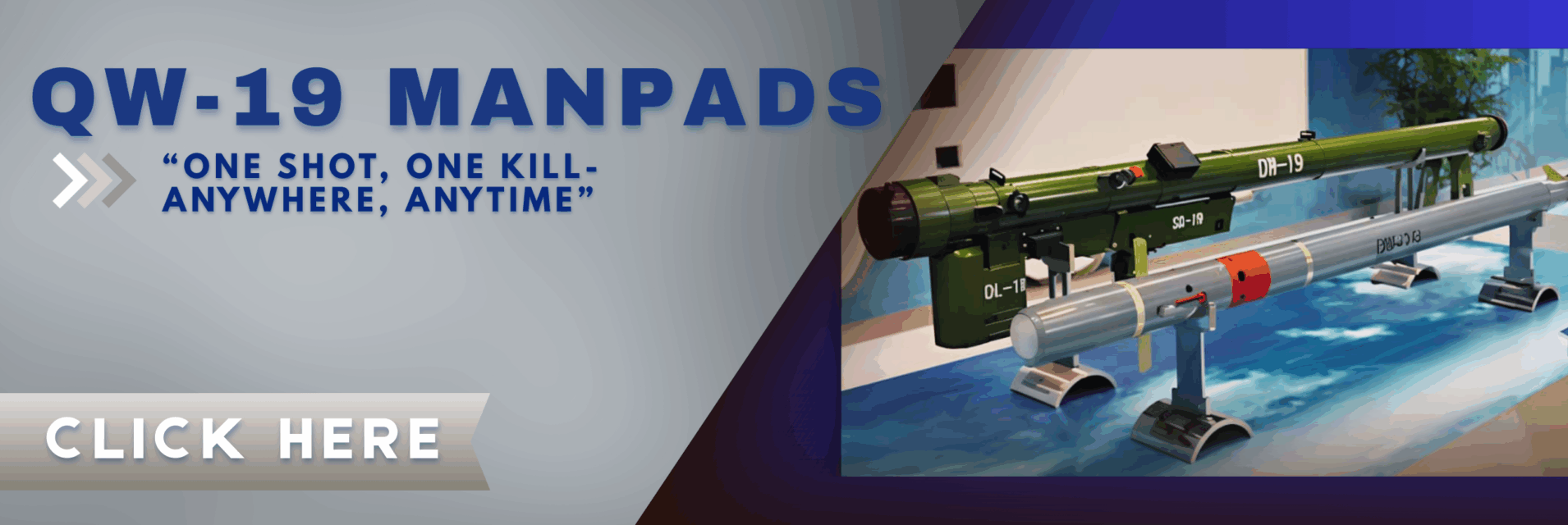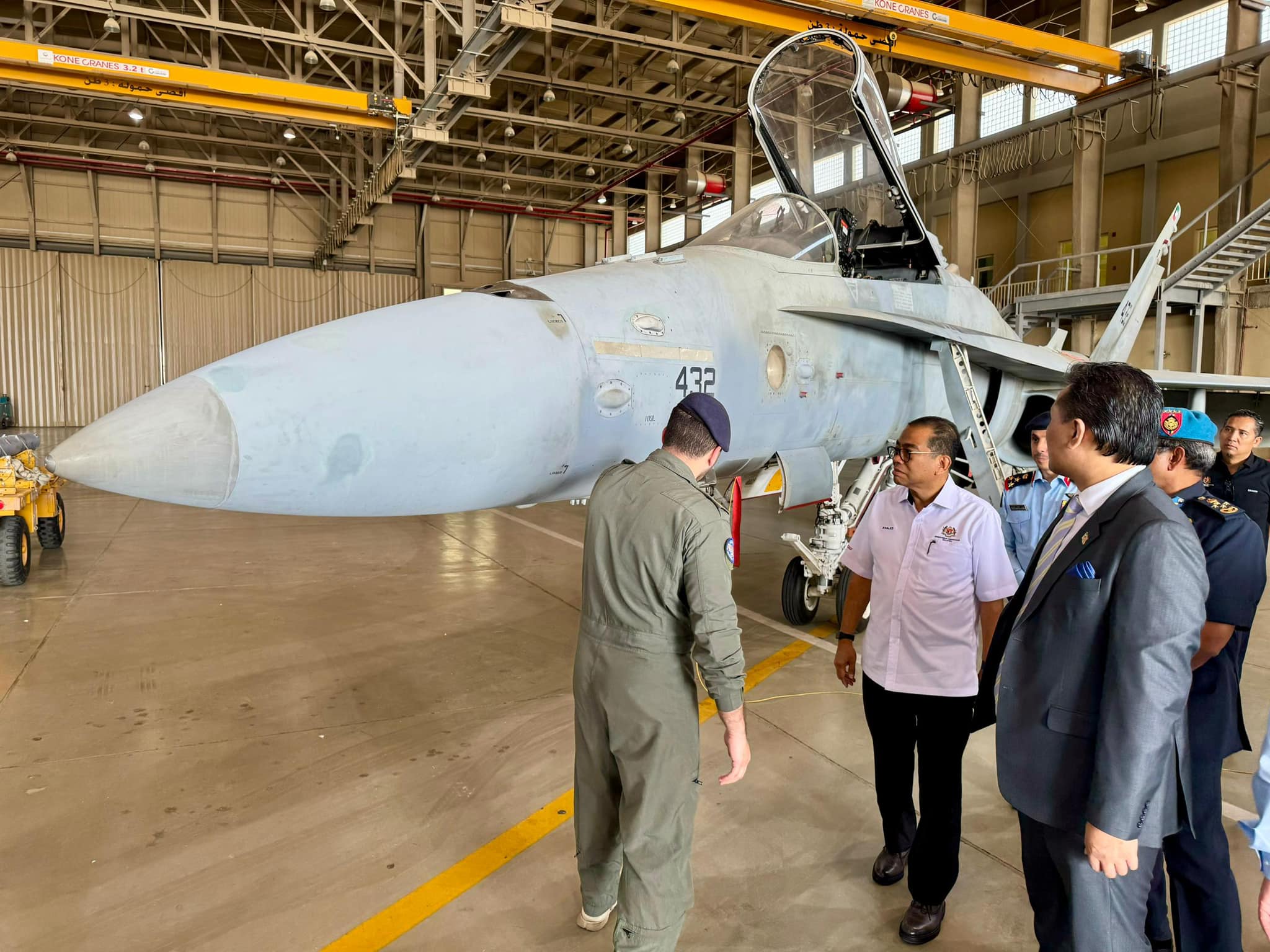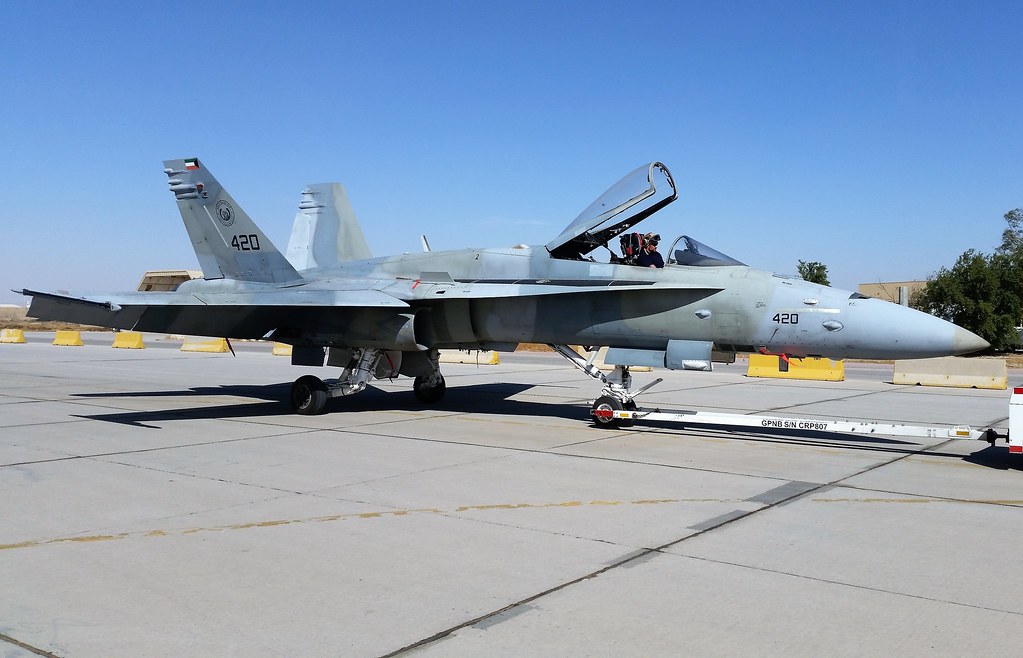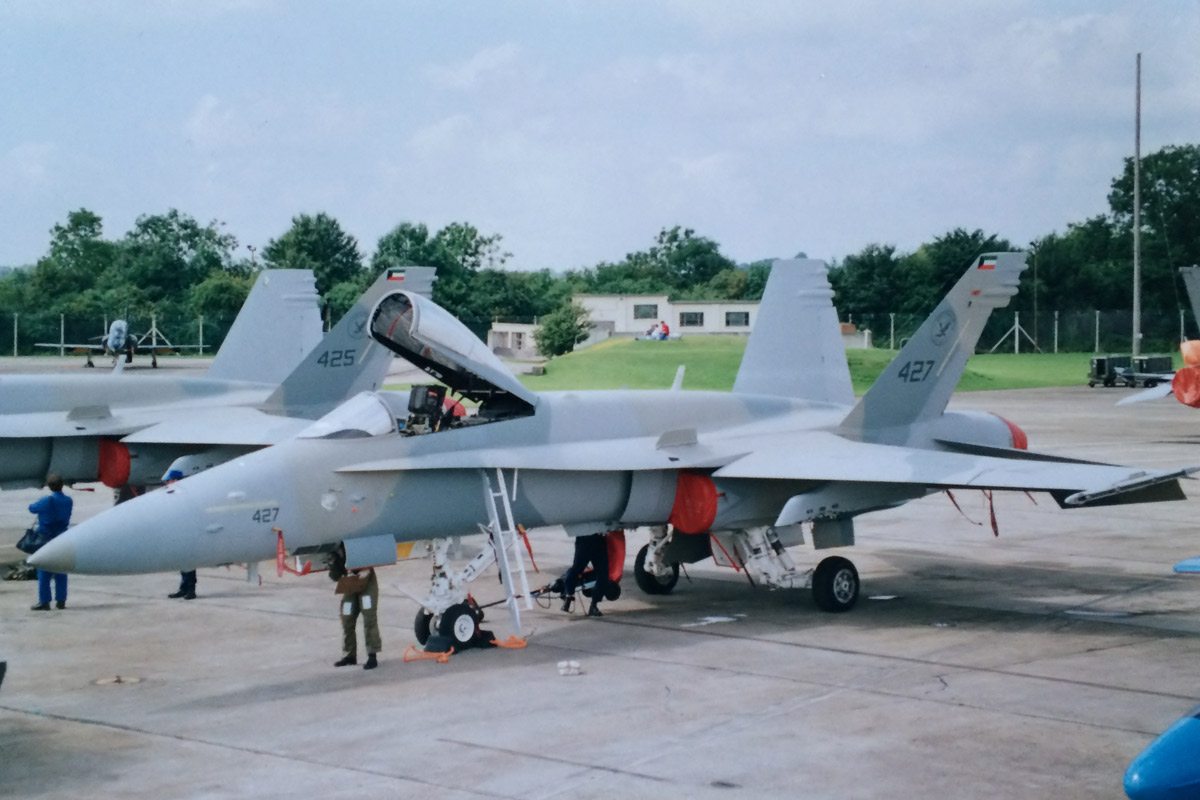Green Light from Washington: U.S. Approves Malaysia’s Bid to Acquire Kuwaiti F/A-18 Hornets
RMAF chief General Tan Sri Asghar Khan Goriman Khan confirmed that Washington had granted the necessary clearance, paving the way for intensified trilateral negotiations involving Malaysia, Kuwait, and the United States.


(DEFENCE SECURITY ASIA) — In a major breakthrough for Malaysia’s air combat capabilities, the United States has formally approved the transfer of used F/A-18 Hornet fighter jets from the Kuwait Air Force to the Royal Malaysian Air Force (RMAF), significantly advancing a long-anticipated defence deal between Kuala Lumpur and Kuwait.
RMAF chief General Tan Sri Asghar Khan Goriman Khan confirmed that Washington had granted the necessary clearance, paving the way for intensified trilateral negotiations involving Malaysia, Kuwait, and the United States.
“There is positive progress (on the deal)… we have set up a committee comprising the Defence Ministries of both countries and the Kuwaiti Air Force, and the US has granted approval for us to proceed with further discussions,” the RMAF chief said during a press conference at the air force’s 67th anniversary celebration at the Kuantan air base.
While the deal has cleared a major legal hurdle under the U.S. Arms Export Control Act — which mandates congressional approval for any third-party transfer of American-made weaponry — Malaysia must still wait for Kuwait to take delivery of its new F/A-18E/F Super Hornets from the United States before the transfer can proceed.
“Once they receive the Super Hornets, then, God willing, the transfer from Kuwait to Malaysia will proceed positively. Discussions have already begun,” Asghar Khan added, signalling confidence in the next phase of the negotiations.
The proposed acquisition includes approximately 30 F/A-18 Hornets — comprising both the single-seat F/A-18C and twin-seat F/A-18D variants — all of which have served in the Kuwaiti Air Force since their procurement in the 1990s.
Malaysia’s Defence Minister Datuk Seri Mohamed Khaled previously stated that the jets are in generally good condition and remain viable for extended operational use, especially as Kuala Lumpur looks to reinforce its ageing fighter fleet amidst regional security uncertainties.

His visit to Kuwait in October last year reportedly resulted in a positive response from the Gulf nation, which expressed no objections to Malaysia’s intent to acquire the legacy Hornets.
At present, the RMAF operates eight F/A-18D Hornets alongside 18 Russian-made Sukhoi Su-30MKM multirole fighters as part of its frontline combat aircraft inventory.
To bolster its air power further, Malaysia recently signed a deal to acquire 18 FA-50M light combat aircraft from South Korea, which are scheduled for delivery beginning next year to replace its retired BAE Hawk 208/108 fleet.
The approval from Washington is not only a strategic milestone for Malaysia but also underscores growing U.S. confidence in its Southeast Asian partner as a stable and capable operator of American-made platforms in the Indo-Pacific theatre.
This impending transfer, once completed, will significantly enhance the RMAF’s combat readiness and interoperability with allied forces, particularly within the framework of U.S.-aligned regional defence architectures.
As great power competition intensifies in the South China Sea and broader Indo-Pacific, Malaysia’s acquisition of proven, combat-tested Hornet platforms marks a decisive step toward strengthening its deterrent posture and ensuring strategic air dominance in its immediate neighbourhood.
The F/A-18 Hornet has long served as the backbone of the Kuwait Air Force’s tactical fighter fleet, playing a critical role in the Gulf nation’s air defence strategy since its induction in the early 1990s.

Kuwait first acquired the McDonnell Douglas (now Boeing) F/A-18C and F/A-18D Hornet variants following the 1991 Gulf War, seeking to modernize its air force after the devastation of Iraq’s invasion.
A total of 40 aircraft — comprising 32 single-seat F/A-18Cs and 8 twin-seat F/A-18Ds — were procured under the U.S. Foreign Military Sales (FMS) program and quickly became central to the Kuwait Air Force’s operational doctrine.
These fourth-generation multirole fighters were specifically chosen for their proven performance, all-weather capability, and carrier-capable design, which provided unmatched versatility for both air-to-air and air-to-ground missions.
Over the years, Kuwait’s Hornets have undergone multiple mid-life upgrades to extend service life and enhance mission effectiveness, including improved radar systems, avionics, and electronic warfare suites.
The F/A-18s have regularly participated in bilateral and multinational exercises across the Gulf region and beyond, maintaining high operational readiness and offering valuable interoperability with U.S. and Gulf Cooperation Council (GCC) forces.
Despite their age, the Kuwaiti Hornets are still considered to be in excellent structural condition, with low airframe fatigue thanks to relatively conservative usage and well-maintained operational cycles.
Their combat credibility was reaffirmed during Kuwait’s contribution to coalition air operations in the Middle East, where they were employed in real-world strike and reconnaissance missions under U.S.-led campaigns.

Now, with the pending arrival of the more advanced F/A-18E/F Super Hornets — part of a $1.5 billion modernization deal signed with the U.S. — Kuwait is preparing to retire its legacy Hornet fleet.
The transition is expected to be gradual, allowing Kuwait to maintain uninterrupted air defence capability while progressively integrating the newer Block III Super Hornet platforms into its air order of battle.
This retirement timeline has opened a strategic opportunity for Malaysia, which is seeking to acquire a portion of the Kuwaiti F/A-18 fleet to supplement its own Hornet squadron and bridge the capability gap ahead of new acquisitions.
Given the aircrafts’ well-documented maintenance records, relatively low flight hours, and compatibility with Malaysia’s existing F/A-18D infrastructure, the Kuwaiti Hornets represent a cost-effective and operationally viable solution for RMAF force sustainment.
For Kuwait, the divestment marks a historic transition from a Cold War-era platform to a more digitally-networked, long-range strike fighter, reinforcing its role as a key U.S. ally in the Arabian Gulf and a cornerstone of GCC collective air defence.
Kuwait’s ambitious multi-billion-dollar air force modernization program is rapidly unfolding, with significant strides made in both its Eurofighter Typhoon and F/A-18E/F Super Hornet acquisitions — two cornerstone platforms that will shape the Gulf state’s aerial warfare capabilities for decades.
The most visible progress has been in the delivery of the Eurofighter Typhoon, procured under a €7.96 billion (approximately US$9 billion) agreement signed with Italy in 2016.
Under the contract, Kuwait is set to receive 28 Typhoons — comprising 22 single-seat and six twin-seat aircraft — in a configuration among the most advanced ever produced for the European fighter, featuring the Captor-E AESA radar and advanced defensive aids systems.

